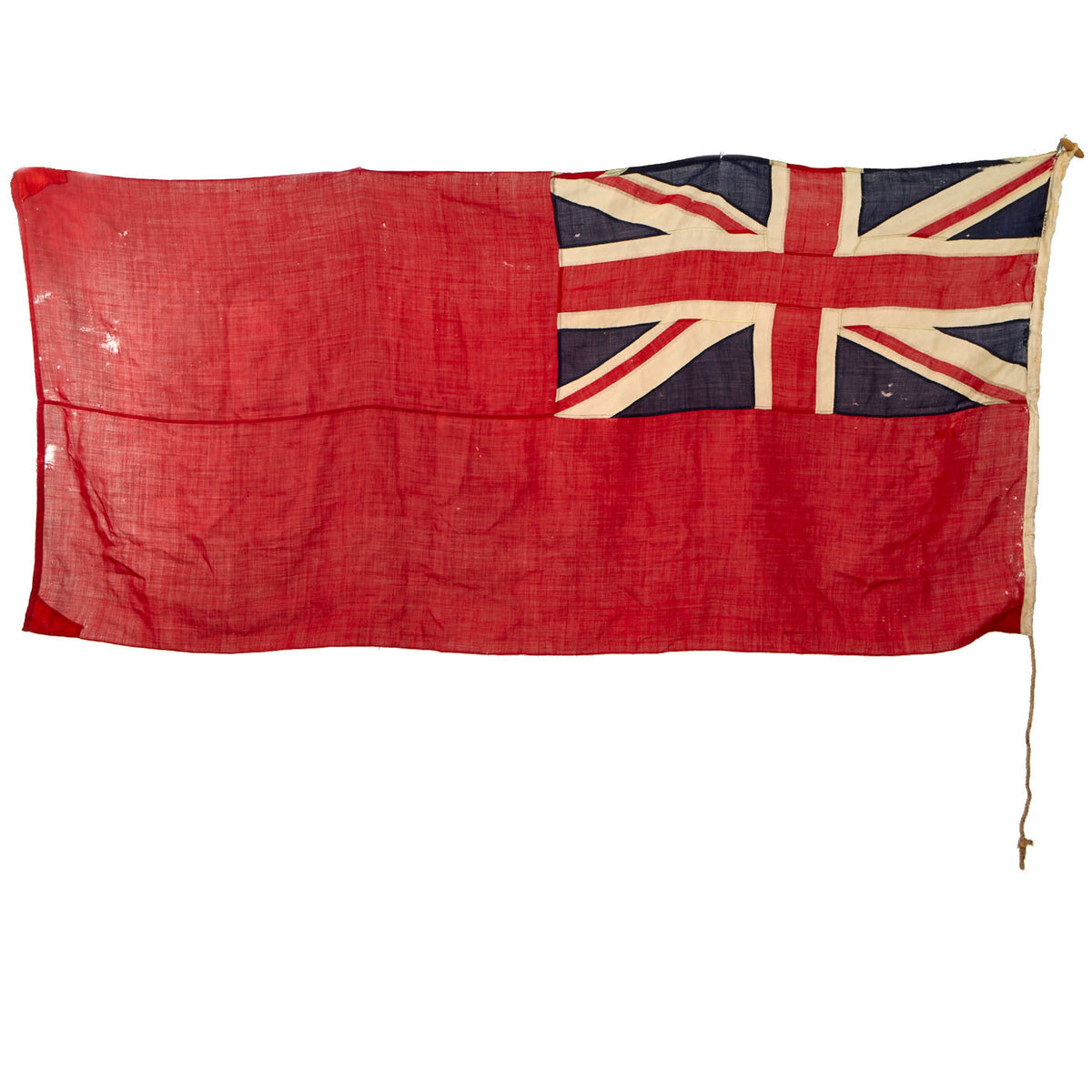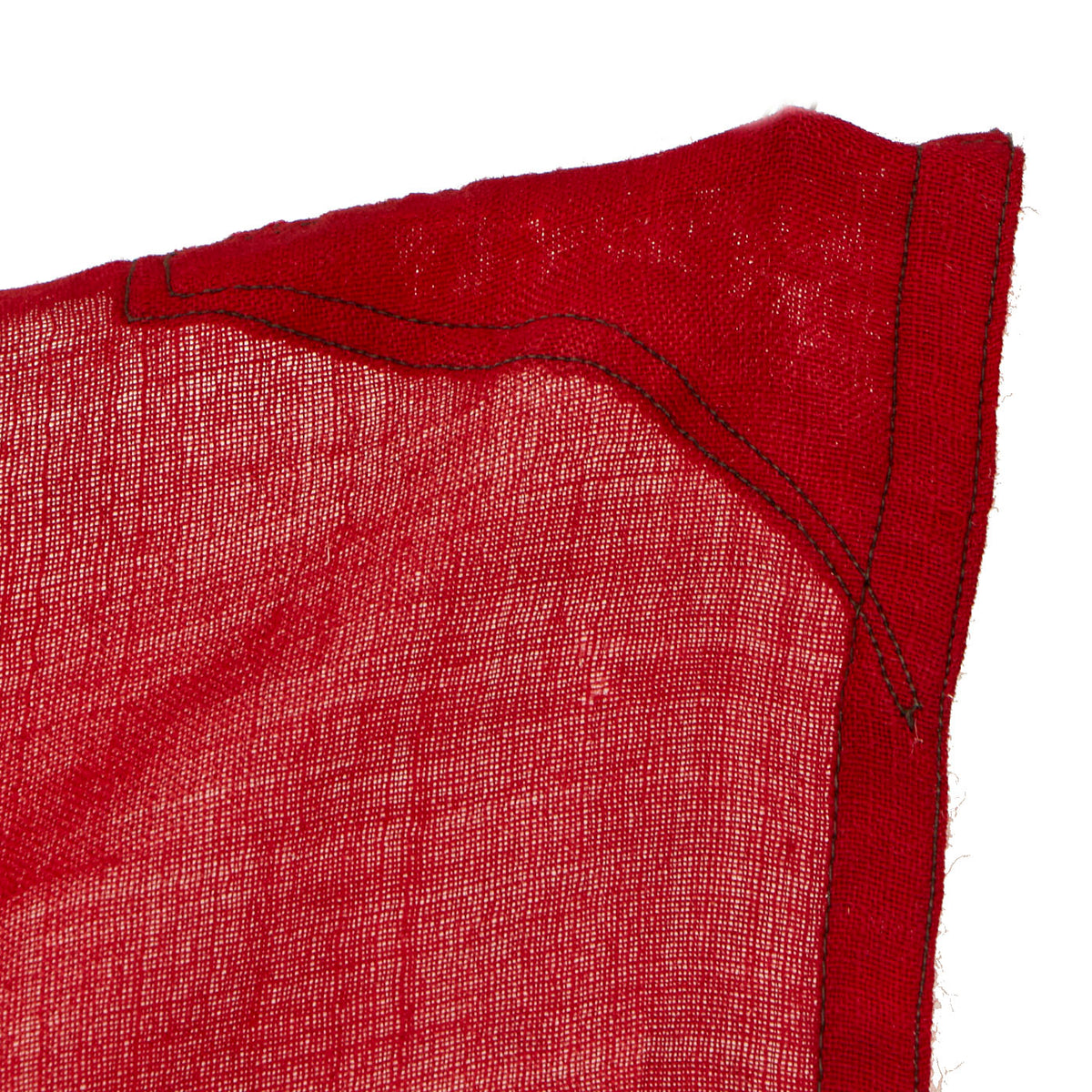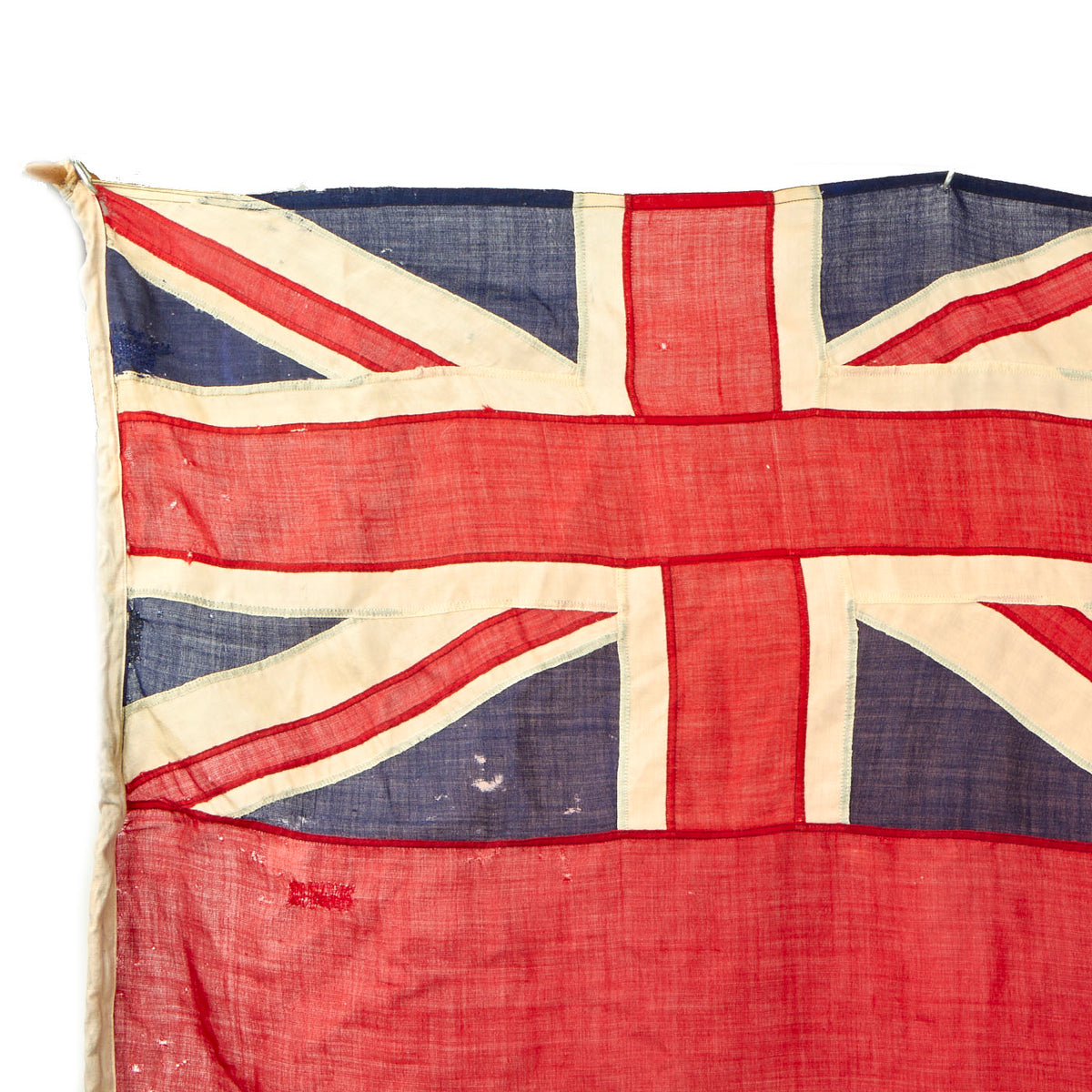Original British WWII Era Post Union Act British Red Ensign Naval Flag – 90” x 41” Original Items
$ 395,00 $ 118,50
Original Item: Only One Available. The Red Ensign or “Red Duster” is the civil ensign of the United Kingdom of Great Britain and Northern Ireland. It is one of the British ensigns, and it is used either plain or defaced with a badge or other emblem, mostly in the right half.
It is the flag flown by British merchant or passenger ships since 1707. Prior to 1707, an English red ensign and a Scottish red ensign were flown by the English Royal Navy and the Royal Scots Navy, respectively. The precise date of the first appearance of these earlier red ensigns is not known, but surviving payment receipts indicate that the English navy was paying to have such flags sewn in the 1620s.
This Red Ensign measures approximately 90 inches by 41 inches and is in great condition. There is no significant damage noticeable but there is some minor staining which is expected on a flag as old as this one. The burlap hoist rope is still present and in good condition with wood toggles. This is a wonderful and genuine example of a WWII era Canadian Ensign and comes ready to display in your Empire collections!
In 1801, with another Act of Union, Ireland joined with Great Britain to form the United Kingdom of Great Britain and Ireland, which resulted in the present Union Flag being added to the canton. The St Patrick’s Cross was added to the Union Flag and, accordingly, to the first quarters of the British ensigns.
The Merchant Shipping Act 1854 included a specific provision that the Red Ensign was the appropriate flag for a British merchantman. This provision was repeated in successive British shipping legislation (i.e., 1889, 1894 (section 73) and 1995).
Until 1864, the Red Ensign was also the principal ensign of the Royal Navy, and as such it was worn by ships of the Red Squadron of the navy, as well as by those warships that were not assigned to any squadron (i.e., those sailing under independent command). The white ensign and the blue ensign were also used by the Royal Navy.
Many in the Admiralty felt that the Royal Navy’s use of three separate ensigns (i.e., the red, white, and blue) was outdated and confusing. Many also felt that merchantmen should be clearly distinguishable from warships. In July 1864, an order-in-council provided that the White Ensign was the ensign of the Royal Naval Service. The Blue Ensign was designated as the proper national colours for ships commanded by an officer of the Royal Naval Reserve, and (with an appropriate badge) as national colours for ships in government service. The Red Ensign was assigned to British merchantmen. This basic structure remains today.
A few years later (1867–1869), the Admiralty determined that the blue ensign charged with an appropriate badge on the fly would be used as the ensign by those ships in the armed, or public, service of the many British colonies. Most British colonies needed to use the blue ensign due to the fact that most had government vessels; some colonies, such as South Australia, had warships. As a result, the Blue Ensign was used throughout the Empire and thus became the model for the flags used by a number of colonies and former colonies in the British Empire. At the same time, the red ensign (which was designated in 1864 as the flag for merchant shipping) was used by merchantmen of those colonies or territories which obtained an Admiralty warrant. Warrants were issued, chronologically, to British North Borneo (1882), British East Africa (1890), Canada (1892), New Zealand (1899), British South Africa (1902), Australia (1903), British Somaliland (1904), Union of South Africa (1910), Newfoundland (1918), Indian Native States (1921), Cyprus (1922), Tanganyika (1923), Western Samoa (1925) and Palestine (1927). Those areas, notably including British India, that did not have an Admiralty warrant used the plain Red Ensign, although unofficial local versions of the Red Ensign were used.
Today, Red Ensigns charged with the local emblem are available to be used by ships registered on several of the component registers of the Red Ensign Group: Bermuda, British Virgin Islands, Cayman Islands, Falkland Islands, Gibraltar, Guernsey, Jersey, and Isle of Man.
Fast Shipping with Professional Packaging
Thanks to our longstanding association with UPS FedEx DHL, and other major international carriers, we are able to provide a range of shipping options. Our warehouse staff is expertly trained and will wrap your products according to our exact and precise specifications. Prior to shipping, your goods will be thoroughly examined and securely secured. We ship to thousands clients each day across multiple countries. This shows how we're dedicated to be the largest retailer on the internet. Warehouses and distribution centres can be located throughout Europe as well as the USA.
Note: Orders with more than one item will be assigned a processing date depending on the item.
Before shipping before shipping, we'll conduct a thorough inspection of the items you have ordered. Today, the majority of orders will be delivered within 48 hours. The delivery time will be between 3-7 days.
Returns
The stock is dynamic and we cannot completely manage it because multiple stakeholders are involved, including our factory and warehouse. So the actual stock may alter at any time. It's possible that you may not receive your order once the order has been made.
Our policy is valid for a period of 30 days. If you don't receive the product within 30 days, we are not able to issue a refund or an exchange.
You can only return an item if it is unused and in the same state as the day you received it. You must have the item in its original packaging.
Related products
Uncategorized
Uncategorized
Uncategorized
Uncategorized
Uncategorized
Angolan Rebel 1970s era 60mm Inert Display Mortar from Angolan Civil War Original Items
Uncategorized
Uncategorized
Uncategorized
Uncategorized
Uncategorized
Uncategorized
Australian WWII Owen MK1 Machine Carbine SMG Custom Fabricated Replica with Sling Original Items
Uncategorized
Uncategorized
Uncategorized
Band of Brothers ORIGINAL GERMAN WWII Le. F.H. 18 10.5cm ARTILLERY PIECE Original Items
Uncategorized
Uncategorized











































































